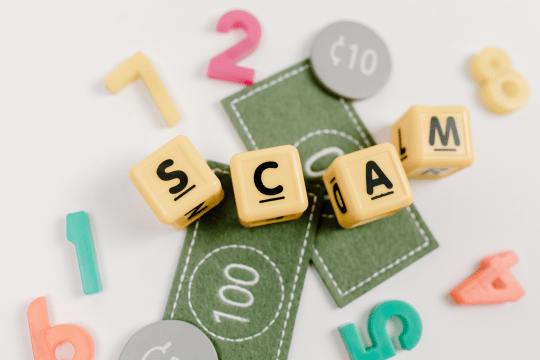“Where there’s a will, there’s a way.”
And where there’s a way, there’s a shop.
And where there’s a shop, there’s an opportunity to spend. So, it’s important for teens to learn more about financial literacy.
Isn’t spending THE most beautiful feeling ever? Well, no doubt.
But is it the best feeling when your teen child has not grappled with the complete understanding of hows and what’s finances? Raising a teenage child is a moon to the back task – it’s costly, there’s a lot of take offs and you’re always out of breath.
But the wisdom that parents impart stays with their little ones throughout their lives.
Here are 5 financial literacy wisdom points you can impart to your child while they’re growing up so it becomes a muscle memory for them when they’re adults.
Financial Literacy for Teens Topic 1: “The importance of saving money”
Saving money is quite important for everyone, including teens. Once taught, it can help you achieve your financial goals, such as saving for a car, paying for college, or building an emergency fund. By saving money, you can also avoid going into debt and reduce your financial stress. In addition, saving money can teach you valuable skills and habits that will benefit you throughout your life. It’s never too early to start building good financial habits, and saving money is a great place to start.
Financial Literacy for Teens Topic 2: “Setting financial goals & setting up a budget”
It’s a great idea for teenagers to start setting financial goals and creating a budget for themselves. This can help them develop healthy financial habits and gain control over their spending and saving. To get started, teenagers should think about their short-term and long-term financial goals. Some examples of short-term goals might include saving up for a new phone or a trip with friends, while long-term goals could be saving for college or a car.
Once they have some goals in mind, teenagers can create a budget to help them plan how to save and spend their money. To do this, they should list out all of their sources of income, such as allowance, part-time job, or gifts, and all of their expenses, such as groceries, gas, and entertainment. Then, they can compare their income and expenses to see if they are spending more than they are earning, and make adjustments to their budget as needed.
It’s important for teenagers to track their spending and regularly review their budget to make sure they are on track to reach their financial goals. They may also want to consider setting up a savings account and putting a portion of their income into it each month. By taking these steps, teenagers can gain a better understanding of their finances and start building a solid foundation for their financial future.
Financial Literacy for Teens Topic 3: The difference between needs and wants
The difference between needs and wants is an important concept for teenagers to understand. Needs are things that are essential for our survival and well-being, such as food, shelter, and clothing. Wants, on the other hand, are things that we would like to have but that are not essential for our survival, such as a new phone, the latest video game, or a designer outfit.
Understanding the difference between needs and wants can help teenagers make more informed decisions about how to spend their money. For example, if a teenager has a limited amount of money, they may need to prioritise buying food and other essential items over more luxurious or non-essential items. By learning to differentiate between their needs and wants, teenagers can develop good financial habits and avoid overspending.
Financial Literacy for Teens Topic 4: The impact of inflation on the value of money for teens
Inflation is an economic concept that refers to the general increase in prices for goods and services over time. This means that the purchasing power of a given amount of money decreases over time, because the same amount of money will be able to buy fewer goods and services in the future than it can today.
For teenagers, this can have a significant impact on the value of their money. For example, if a teenager saves ₹100 today and there is 3% inflation per year, then in 10 years, that ₹100 will only be worth ₹74 in today’s rupees. This means that the teenager will not be able to buy as much with the ₹100 in 10 years as they could today.
To combat the effects of inflation, teenagers can consider investing their money in assets that have the potential to increase in value over time, such as stocks or real estate. They can also consider saving and investing a portion of their income to help their money grow faster and maintain its purchasing power over time. By understanding the impact of inflation and taking steps to manage it, teenagers can help protect the value of their money.
Financial Literacy for Teens Topic 5: The risks and rewards of taking on loan for teens
Taking on a loan can be a big decision for teenagers. While a loan can provide access to funds that may not be readily available, it also carries risks and responsibilities.
One of the main risks of taking on a loan is the potential for financial burden. When a teenager takes on a loan, they are agreeing to borrow money and pay it back with interest. If they are unable to make their loan payments on time, they may face late fees, damage to their credit score, and other financial consequences. This can make it more difficult for the teenager to borrow money in the future and can put a strain on their finances.
On the other hand, taking on a loan can also have some rewards. For example, a loan can provide access to funds that may not be readily available, such as for a car, education, or starting a business. This can help the teenager achieve their goals and improve their financial situation in the long run.
Overall, it’s important for teenagers to carefully consider the risks and rewards of taking on a loan before making a decision. They may want to consult with a financial advisor or another trusted adult to help them understand the potential consequences and make an informed decision.
We hope you impart these points to your ever growing teen child.
We’ll be back with more blogs on how to do this.











